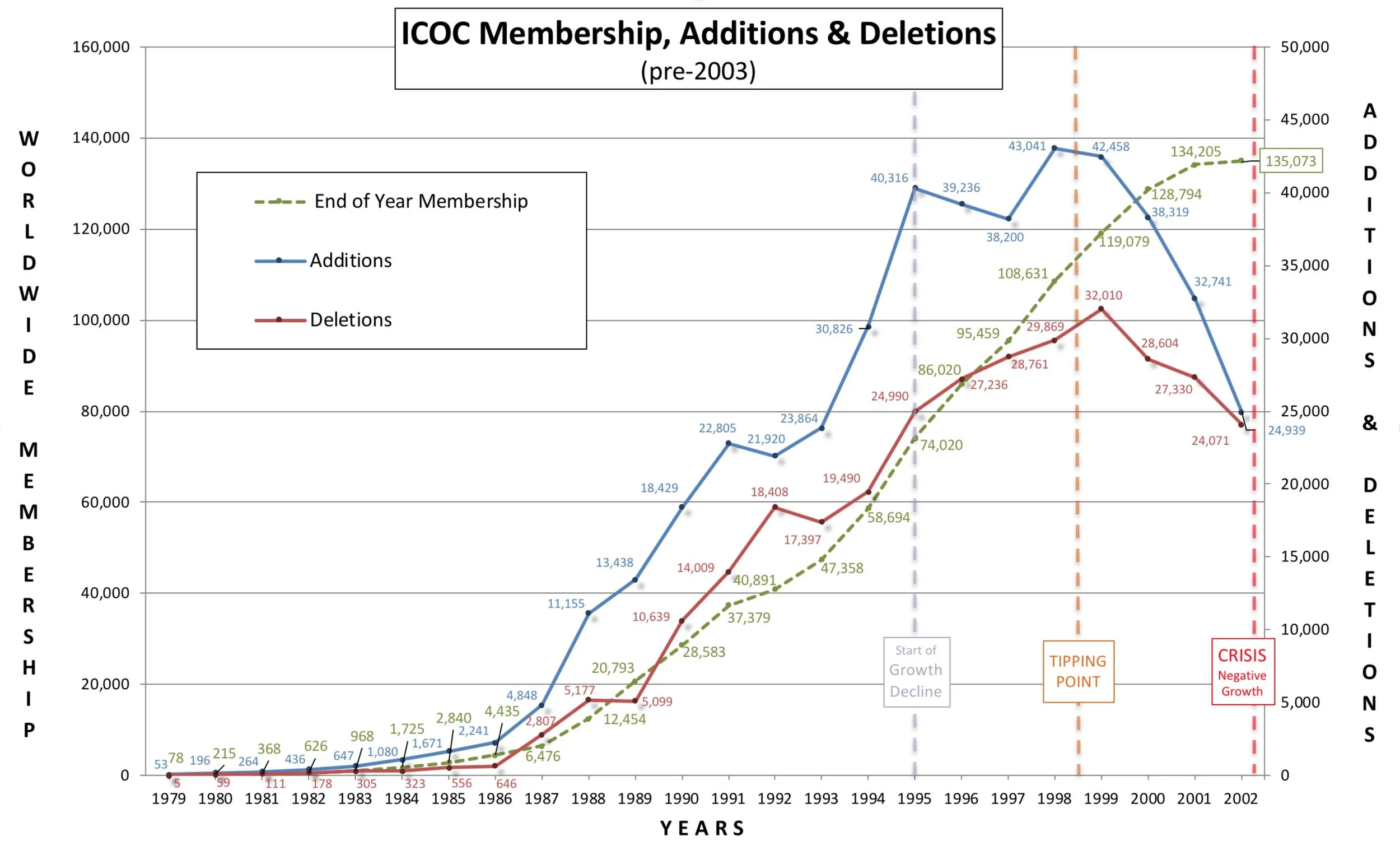A Study of the Statistical Narrative of the International Churches of Christ (ICOC)
-- The Initial Growth Phase --
by Andy Fleming -- Kiev, Ukraine
ABSTRACT
Today is an important moment for the International Churches of Christ(ICOC). As the movement enters its second generation, understanding our history, our strengths and our weaknesses, has never been more vital. Although God’s word has world-transforming power and he desires for the whole world to be saved, there seems to be internal resistance impeding a gain in momentum and forward motion. I believe that part of this resistance can be attributed to lack of faith and discouragement, and self-focus rather than God-focus. At this moment, in this situation, we need the faith of Abraham as much as ever:
"Against all hope, Abraham in hope believed and so became the father of many nations, just as it had been said to him, 'so shall your offspring be.' Without weakening in his faith, he faced the fact that his body was a good as dead—since he was about a hundred years old—and that Sarah’s womb was also dead." (Rom 4:18-19)
That our movement has slowed in growth is a fact, but that does not change what God is able to do through our faith and faithfulness. What God wants to be done in this world, can only be done through his strength and wisdom.
From 1979 to 2002, the ICOC grew from a single congregation of about 30 members to a worldwide fellowship of 439 congregations and 135,072 members. Although the growth was perceptibly slowing in the latter part of this period, the organizational collapse and loss of membership in 2003 were severe and largely unanticipated by the leadership. The purpose of this in-depth statistical analysis is to examine the available data of this “initial growth phase” and look for trends and patterns that might have served as indicators and warnings as to what was about to take place. Some of the most significant findings of this study can be summarized as follows:

· 1999 was the actual “tipping point” for the ICOC’s growth where the rate of members leaving began an irreversible trend (without radical or divine intervention) to outpace the rate of members joining, thereby showing the events of 2003 as the inevitable outcome;
· 1990 marked the end of global “exponential growth” and the beginning of “linear growth”;
· Certain strategic decisions like “building mega-churches” and “church planting schedules” were made and implemented without including the means for effective evaluation and strategic redevelopment;
· Signs of weaknesses and flaws in the church growth paradigms were showing as early as 1990, but due to the attention given to the ongoing successes of geographic expansion and the planting of new churches, these warnings and indicators were minimized or ignored, and thereby unknown to much of the membership;
· The ICOC developed an identifiable growth pattern that manifested itself across World Sectors and churches of all sizes—these universal growth trends demonstrate that the underlying causes were fundamental and connected to shared strategies and assumptions;
· Although the Los Angeles church was supposed to become the model and solution, it shared the same growth pattern and experienced its own crisis;
· The 6-year plan compromised a number of the well-established “church planting” principles, and in the end multiplied weaknesses and not strengths;
· Beyond the statistical evidence, the similarities between the Boston and Los Angeles growth narratives also demonstrate the outcome of shared strategies and assumptions;
· The focus on numerical growth and expansion above all else, eventually created imbalanced ministry practices where the needs of the church were not the priority;
· The first part of the Great Commission was considered more important than the second part, and so the goal of making new converts held priority over supporting and helping the already converted;
· Some of the fundamental assumptions like “one leader,” “one congregation in a city,” and “one movement,” need to be reevaluated through examination of the Bible’s teaching and example.
This knowledge doesn’t change the facts or the past, but gaining insight into past failures and challenges can help us dream and plan more effectively as we move forward in faith. It’s time for a new generation and new growth phase for the ICOC, and the priorities are still clear: “Seek first his kingdom and his righteousness, and all these things will be given to you as well.” (Matt 6:33)
View the entire 39-page article here: http://www.missionstory.com/let-each-one-be-careful-how-he-builds-(2018).html

